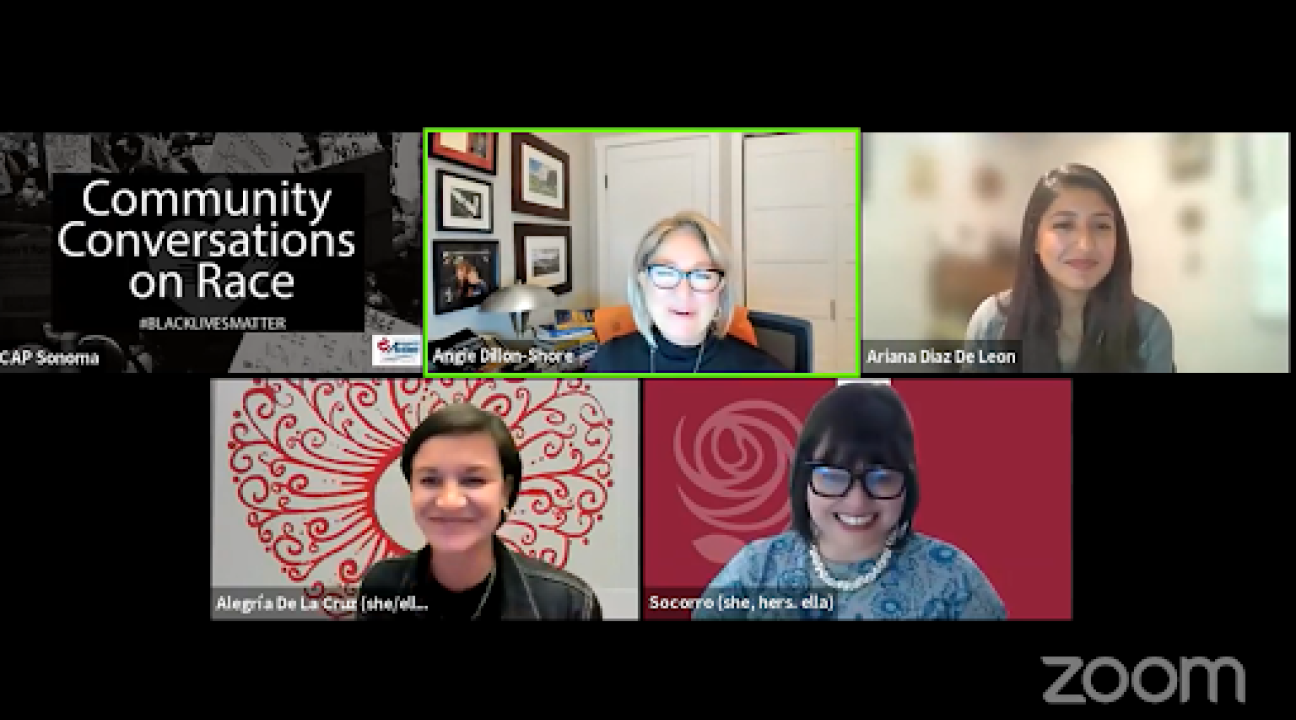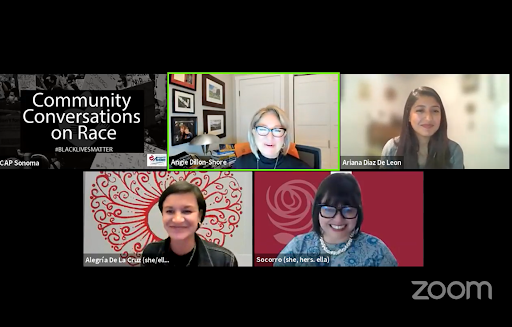Looking at Workplaces Through the Lens of DEI
“It's huge, we are all operating within an oppressive system…all systems thrive from extractive colonialism…the only way I really believe is to be navigating this system and dismantling it as we see the issues.” Throughout the pandemic, Community Action Partnership of Sonoma County (CAP) has hosted many Community Conversations on Race that are vast and informative. This particular event was about the focus on diversity, equity, and inclusion (or DEI, for short) within government and nonprofit organizations. The event was moderated by Ariana Diaz De Leon with panelists: Director of the Sonoma County Office of Equity, Alegria De La Cruz, Angie Dillon-Shore, executive director of First Five, and Socorro Shiels, the Diversity, Inclusion, and Equal Opportunity Employment Officer at the City of Santa Rosa. The main topic of the conversation was about the work of DEI, which involves the work of county and city officials alike to include more diversity within higher level positions and work with lower income individuals to have their voices heard. It’s also being incorporated into the officials daily lives. Before that question was being brought up each panelist went into detail about what they do and how they fit into the fabric of the cities as well as the county of Sonoma as a whole.
Each panelist brought their own unique perspective to the table and were able to bounce off of each other when explaining what they do and how it connects to DEI within their own respective fields and what helped motivate them to get into the field of DEI in the first place. De La Cruz talked about how the Office of Equity was, “created in response to the horrible treatment of Black people at the hands of law enforcement…the office of equity popped up in August of 2020 so it was my job to kind of slide in to help kick start and get it off the ground.” Angie Dillon-Shore had a similar experience where she works. The non-profit, First Five, recently started a new strategic planning cycle when the pandemic hit which was really digging into data and in their case, it was to see how young children and families were doing. What do they need and how should this commission invest? They did a lot of surveys of different folks which helped show that children and families of color are at an extreme disadvantage on almost every front. It proved to Dillon-Shore that change needed to be made and with her help, the commission prioritized funding for family resource centers which helped children of color, such as gifting them school supplies, and helping them through education, among other things. This project will hopefully allow people in Sonoma County to feel a part of the community and identify with everyone within the county through being elevated to the same playing field with education and other necessities. Shiels introduced a similar idea, “How do we create the strongest, most robust workforce to work with and for our community?” Her position led her to work with city, police, and fire task forces to understand the Sonoma County community and how best to help everyone within it.
The conversation continued into more philosophical questions such as, “How do we navigate ‘good people in an oppressive system’ within the community?” Socorro Shiels said that “it starts with individual racism and…I don’t think that it’s an individual one-off but it’s within the system itself. We need to do better and not dwell on the individual journey but the government institution needs to serve everyone in order for it to survive.” Alegria De La Cruz echoed with, “There is a way to stop the harm and we can do that by fixing and unpacking the system to help our community…look at the data and how does it make you feel? It’s painful and needs to change.”
Another idea was about surfacing power and what it means for the county and people within it. Dillon-Shore mentioned that, “[systemic] change will be really slow until white people, not people of color, who are again and again offering their public comment to the supervisors and speaking out, will bring change and allow for more people of color to have the spotlight and highlight issues within the county.” The comments made by the other panelists discussed similar opinions of how white people in power will continue to perpetuate slow change for people of color. Until this power is dissolved and diversified the conversation won’t change.
Another idea that was asked was about how funds can be invested in the community. Angie responded by mentioning The American Rescue Plan Act (ARPA), which is $350 billion in additional funding for state and local governments. The funding was allocated to the county to cover COVID-19 response, increased expenditures, replenish lost revenue, and mitigate economic harm due to the pandemic. She continued by mentioning that ARPA is the biggest and most significant opportunity for our county. It can be used to advance equity, address racial disparities and give the opportunities to disrupt the status quo which will lead to more disruptions in addressing racial equity. Shiels mentioned that, “The county models such an inclusive and community-centered process that’s really about educating people on what ARPA is and how it will be used for good.”

Author: Addison Smith



